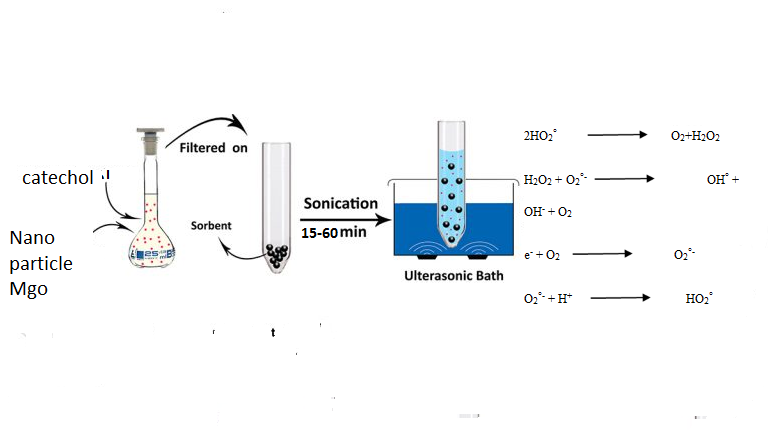
Catechol is a highly toxic phenolic organic compound used in various industries such as refineries, toxics, dyes and plastics. When this compound enters the environment, it can have negative effects on human health and the ecosystem. In this study-removed pyrocatechol from aqueous solutions using a sonocatalytic process using magnesium oxide nanoparticles. The study was conducted on a laboratory scale and the effects of pH, catalyst dose, initial concentration and reaction time under 130-kHz ultrasonic waves on the sonocatalytic degradation of pyrocatechol were investigated. The maximum process efficiency under optimal conditions (i.e. pyrocatechol concentration of 25 mg / l, pH = 3, nanoparticle dose of 500 mg / l after a contact time of 60 min) was 92%. The results showed that this process follows first order pseudokinetics. The results show that the sonocatalytic process in the presence of magnesium oxide nanoparticles has a high efficiency in removing catechol from aqueous solutions
Total file downloads: 11